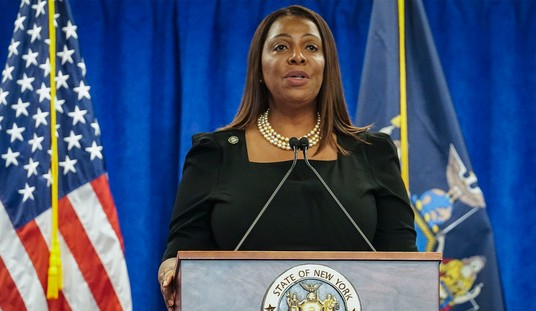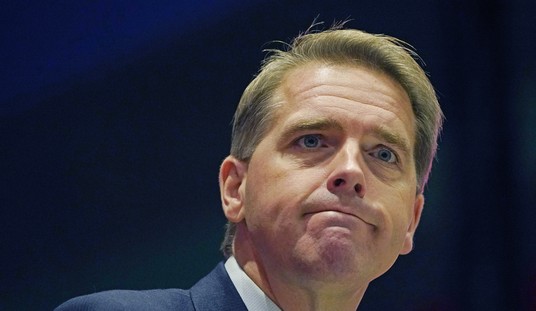The supposed climate cataclysm consensus is disintegrating under growing pressure from reality. Green energy subsidies, regulations and mandates are crumbling. Greenpeace has been hit with a $667-million judgment for conspiracy, defamation, trespass, and fostering arson and property destruction.
Last year’s “Buy a Tesla – save the planet” placards have been exchanged for “mostly peaceful” protests based on “Torch a Tesla – save our democracy” and infernos of toxic pollution and “carbon” emissions.
Even higher anxiety is battering climate activists from the Lee Zeldin Environmental Protection Agency’s review of EPA’s 2009 “Endangerment Finding” (EF) – the foundation and justification for restrictive Obama and Biden Era standards and regulations on permissible electricity generation, automobiles, furnaces, home appliances and much more.
Humans and animals exhale carbon dioxide when they breathe, combustion processes also emit CO2, and during photosynthesis plants absorb CO2 and emit oxygen. More atmospheric CO2 helps plants grow better, faster and with less water. Nearly all life on Earth depends on this process. It’s basic science.
That’s why the Clean Air Act doesn’t include carbon dioxide in its list of dangerous pollutants, along with carbon monoxide, lead, nitrogen dioxide, ground-level ozone, particulates and sulfur dioxide.
But fossil-fuel-hating activists blame CO2 for the alleged “climate crisis” – and in Massachusetts v. EPA the US Supreme Court said EPA could regulate CO2 emissions if the agency found that they “cause or contribute” to “air pollution” that may be “reasonably anticipated” to “endanger public health or welfare.”
Recommended
The Obama EPA quickly determined that they did and issued an Endangerment Finding that gave the agency effective control over America’s energy, transportation, industries, furnaces and stoves– indeed, over almost every facet of our lives and living standards – to help “fundamentally transform” the nation.
In formulating its decision, EPA did no research of its own, relied heavily on GIGO computer models and outdated technical studies, dismissed the clear benefits of rising atmospheric CO2 levels, and ignored studies that didn’t support its decision. EPA even told one of its own experts (who had offered evidence and analyses contradicting official claims) that “the administration has decided to move forward [on implementing the EF] and your comments do not help the legal or policy case for this decision.”
That alone is a compelling reason for reversing the Endangerment Finding. But other realities also argue convincingly that EPA’s 2009 action should be nullified.
First, Massachusetts v. EPA has been sidelined, rendered irrelevant or effectively reversed.
West Virginia v. EPA (2022) ruled that federal agencies may not violate the “major questions doctrine,” which holds that, in the absence of clear congressional direction or authorization, agencies may not make decisions or issue regulations “of vast economic and political significance.”
The Obama EPA had no clear congressional language or authorization to declare that carbon dioxide is a pollutant that would likely “endanger public health or welfare.” The Supreme Court’s minimal guidance in Massachusetts underscores the absence of congressional intent or direction. The process EPA used in rendering its predetermined finding demonstrates how little actual science played a role. And the enormous significance and impact of the EF decision and subsequent regulations can hardly be disputed.
Similarly, the SCOTUS 2024 ruling in Loper Bright v. Raimondo overturned the court’s 1984 decision in Chevron v. NRDC and ended judicial deference to government agencies (the “Chevron doctrine”). Bureaucrats may no longer devise “reasonable interpretations” of unclear statutory language if those interpretations would significantly expand regulatory powers or inflate private sector costs.
These two decisions mean EPA had no authority to convert plant-fertilizing, life-giving carbon dioxide into a dangerous, health-threatening pollutant.
Second, reams of post-2009 studies and analyses show that CO2 is hugely beneficial to forests, grasslands and croplands – and that CO2 and other greenhouse gases (GHGs) have not replaced the powerful, complex, interconnected natural forces that have always driven global warming, climate change, ice ages, Little Ice Ages, and extreme weather events. EPA ignored this in 2009.
Others demonstrate that there is no climate crisis, nothing unprecedented in today’s climate and weather, and nothing modern industrialized societies cannot cope with far more easily than our ancestors did.
(See Climate Change Reconsidered II, CO2 Coalition studies, NOAA hurricane history, US tornado records, and studies the Trump EPA will undoubtedly consult during its EF reconsideration.)
Third, our energy, jobs, living standards, health, welfare, national security and much more depend on fossil fuels – for energy and for pharmaceuticals, plastics and thousands of other essential products that are manufactured using petrochemical feedstocks.
Fourth, China, India and other rapidly developing nations also depend on fossil fuels – and in fact are increasing their coal and petroleum use every year – to build their industries and economies and improve their people’s health and living standards. They are not about stop doing so to appease those who insist the world faces a climate crisis. That means even eliminating coal, oil, gas and petrochemical use in the United States would have no effect on global GHG emissions.
Finally, the primary threats to human and planetary health and welfare come not from using fossil fuels – but from eliminating them, trying to switch to “clean, green, renewable” energy, and no longer having vital petrochemical products.
As Britain and Germany have shown, switching to intermittent, weather-dependent wind and solar energy with backup power raises electricity prices to 3-4 times what average Americans currently pay. Industries cannot compete internationally, millions lose their jobs, living expenses soar, and families cannot afford to heat their homes in winter or cool them in summertime.
Thousands die unnecessarily every year from heatstroke, hypothermia, and diseases they would survive if they weren’t so hot, cold or malnourished.
In poor countries, millions die annually from indoor pollution from wood and dung fires, from spoiled food due to lack of refrigeration, from contaminated drinking water due to the absence of sanitation and treated water, and from diseases that would be cured in modern healthcare systems.
The common factor in all these deaths is the absence of reliable, affordable energy, largely imposed by climate-focused bureaucrats who finance only wind and solar projects in poor nations.
Wind and solar power, electric vehicle and grid-backup batteries, and associated transmission lines require metals and minerals mining and processing on unprecedented scales, power-generation facilities blanketing millions of acres of croplands and wildlife habitats, and the disposal of gigantic equipment that breaks or wears out quickly and cannot be recycled.
Reliance on wind, solar and battery power also means blackouts amid heatwaves and cold spells, cars stalled in snowstorms and hurricane evacuations – and thus still more deaths.
A slightly warmer planet with more atmospheric CO2 would be greatly beneficial for plants, wildlife and humanity. A colder planet with less carbon dioxide would significantly reduce arable croplands, growing seasons, wildlife habitats and our ability to feed humanity.
EPA’s 2009 Endangerment Finding ignored virtually all these realities. EPA Administrator Lee Zeldin’s reexamination of that decision must not repeat that mistake.
Paul Driessen is senior policy analyst for the Committee For A Constructive Tomorrow (www.CFACT.org) and author of books and articles on energy, climate change, economic development and human rights.

























Join the conversation as a VIP Member